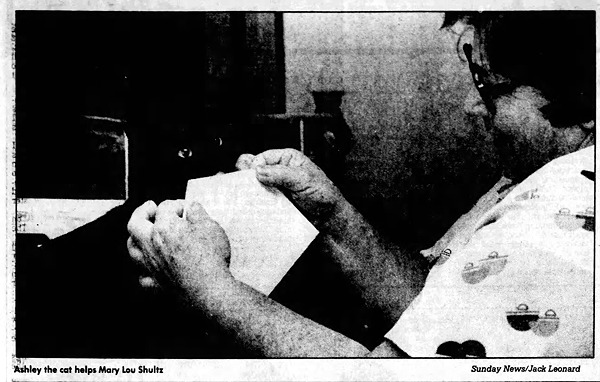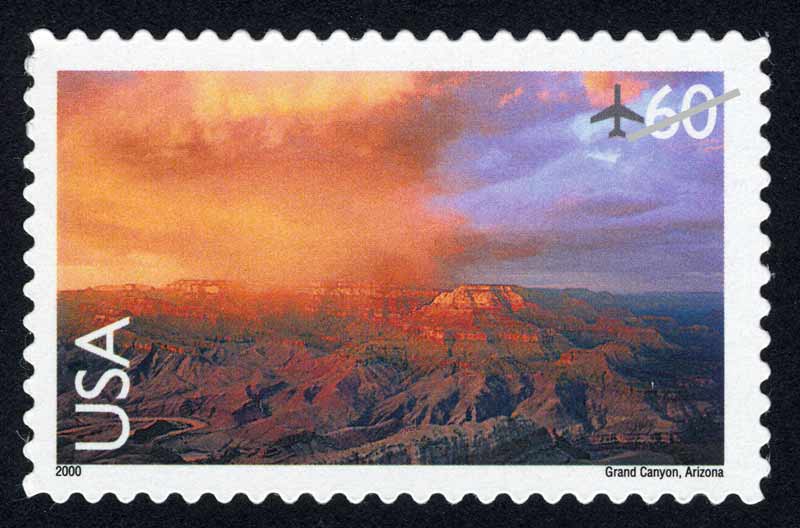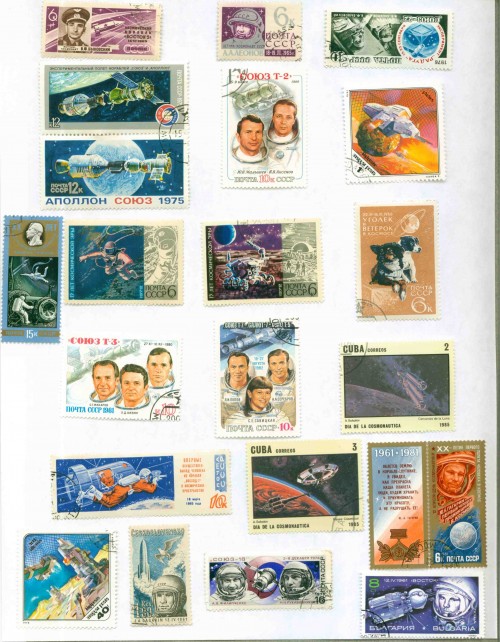Stamps
Stamp-Licking Animals
Martin Wainwright tells the following story in The "Guardian" Book of April Fool's Day:Like the best April Fool's jokes, this was to girdle the Earth. Not only was the post office besieged by punters wanting to send catlick mail (until the cat was driven demented and fled after two days) but the story spread and resurfaced for years. Animal protection societies weighed in, MPs spoke and the innocuous prank took off. Bone's friend was send clippings from across the country and, as the years went by, from Australia, Shanghai and the United States.
This suggests that stamp-licking animals were a journalistic invention. However, there do seem to have been some real-life examples of the phenomenon.

Longview Daily News - Dec 13, 1974

The Bloomington Pantagraph - Mar 11, 1951

"Ashley practiced stamp-licking until he had the task down purrfectly, then offered to kick off the Organization for Responsible Care of Animals' public appeal... In return for his generosity, each donor will receive a thank-you note enclosed in an Ashley-licked envelope with stamp attached."
Lancaster Sunday News - Oct 6, 1985
Posted By: Alex - Thu Jun 17, 2021 -
Comments (0)
Category: Cats, Dogs, Postal Services, Stamps
Operation Cornflakes
1945: Toward the end of World War II, the American OSS cooked up a scheme to use postage stamps to demoralize the German people. The idea was to create fake 12 Pfennig stamps on which Hitler's profile was replaced by an image of Hitler with his jaw eaten away.The Operation had no discernible effect on German morale. But it's a favorite topic among stamp collectors, who are flattered to think that anyone in the OSS ever imagined that stamps might have had such an effect.
More info: wikipedia

Posted By: Alex - Wed Feb 10, 2021 -
Comments (1)
Category: War, Spies and Intelligence Services, 1940s, Stamps
Grand Canyon, Colorado
May 1999: the U.S. Postal Service had printed 100 million copies of a stamp showing the Grand Canyon before anyone noticed that the stamp had "Grand Canyon, Colorado" printed in the corner. Luckily, the stamps hadn't been released to the public yet, but they all had to be destroyed and replaced with a new stamp which correctly placed the Grand Canyon in Arizona.According to the site canyonology.com, the problems with the stamp didn't end there. It was discovered that the image of the canyon had been flipped left to right, but the postal service decided this wasn't enough of an error to warrant reprinting the stamp.

Salem Statesman Journal - May 18, 1999
Posted By: Alex - Wed Jun 17, 2020 -
Comments (2)
Category: 1990s, Postal Services, Stamps, Arizona
Soviet Space Stamps
These were sent to me by my Belgian pal Peter Dans-saert.
Click on the image twice, to get them really big!
Posted By: Paul - Thu Dec 11, 2008 -
Comments (6)
Category: Art, Communications, Postal Services, Stamps, Futurism, Patriotism, Technology, Space Travel, 1960s, Russia, Yesterday’s Tomorrows

| Who We Are |
|---|
| Alex Boese Alex is the creator and curator of the Museum of Hoaxes. He's also the author of various weird, non-fiction, science-themed books such as Elephants on Acid and Psychedelic Apes. Paul Di Filippo Paul has been paid to put weird ideas into fictional form for over thirty years, in his career as a noted science fiction writer. He has recently begun blogging on many curious topics with three fellow writers at The Inferior 4+1. Contact Us |





